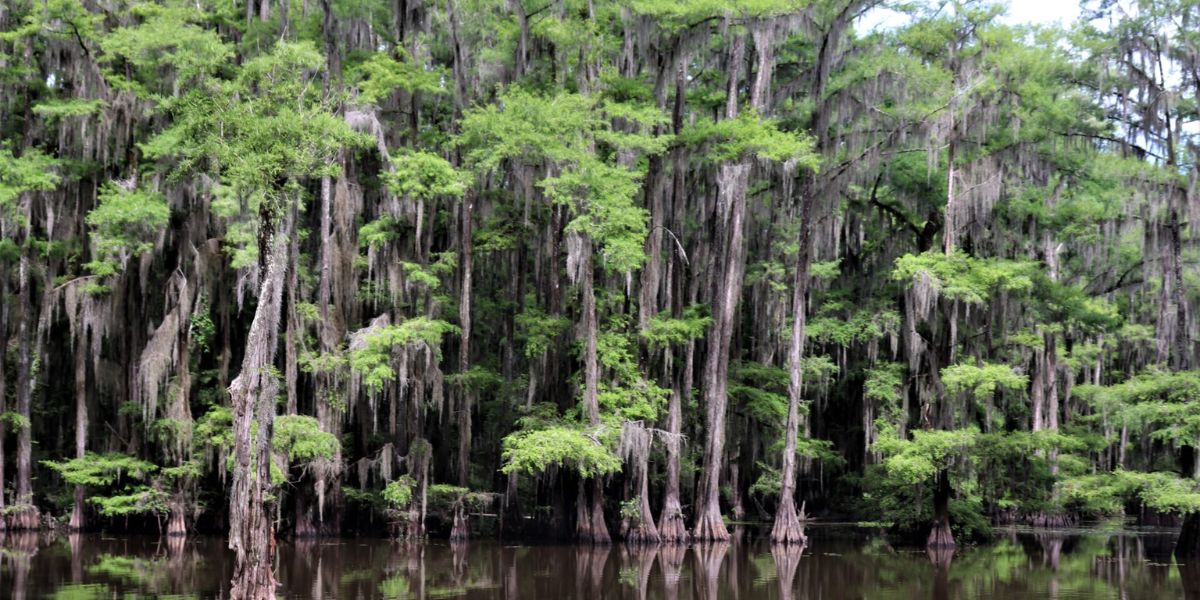Along the Texas coast, where salty winds whip across marshes and tidal flats, stands a strange and eerie sight: fields of skeletal trees, their barkless trunks bleached by the sun, reaching like bony fingers toward the sky.
These are Texas’s “ghost forests” — once-lush woodlands now drowned by rising seas and saltwater intrusion. They are a stark reminder of how climate, nature, and time shape the land — and they offer a rare and haunting beauty that draws scientists, photographers, and curious travelers alike.
Ghost forests are more than just dead trees. They are a frozen record of the past, a snapshot of a lost world, and a warning of the future. In this article, we’ll explore what these ghost forests are, where you can find them in Texas, why they form, and why they matter.
What Are Ghost Forests?
A “ghost forest” refers to a stand of dead trees that have been killed primarily by saltwater intrusion, usually due to rising sea levels, storm surges, or changes in hydrology.
Though the term might sound spooky, it’s a scientific term describing a very real process: as saltwater moves into freshwater environments, trees adapted to freshwater cannot survive. Over time, they die, leaving behind bare, pale trunks that can stand for decades before eventually collapsing.
In Texas, ghost forests often appear along the Gulf Coast, especially in areas like the Sabine National Wildlife Refuge, McFaddin National Wildlife Refuge, and parts of the Brazoria National Wildlife Refuge. Here, once-thriving oak, pine, and cypress stands have been transformed into haunting, open landscapes, where deadwood rises from marshy ground or shallow water.
The Natural Forces Behind the Ghosts
The creation of ghost forests is closely tied to climate change and environmental shifts. Rising sea levels — driven by warming ocean temperatures and melting ice caps — push saltwater further inland. Major storms like hurricanes can also carve new channels, allowing seawater to flood freshwater areas permanently.
Additionally, human activities, such as building dams, levees, and canals, can alter natural water flow, making inland forests more vulnerable to salinization.
For example, in the Big Thicket region of East Texas, saltwater from the Gulf has pushed up the Neches River, killing off large stands of bald cypress and oak. In some places, peat soils have eroded away, leaving only the skeletons of trees as witnesses to what once was.
The Haunting Beauty of a Vanished World
Despite their grim origins, ghost forests hold an undeniable beauty. The stark, pale trunks create a dramatic contrast against the green marsh grass and blue coastal waters. At sunrise and sunset, the light catches on the smooth wood, creating an otherworldly glow. Fog rolling over the landscape makes it look like something from a dream — or a nightmare.
For photographers, painters, and nature lovers, these ghost forests offer a unique canvas. Birders can also find surprising life here: though the trees are dead, the open habitat attracts herons, egrets, ospreys, and other wildlife. Alligators and crabs move through the shallow waters, while fish dart among the submerged roots. Even in death, the forests continue to support life in new forms.
Why Ghost Forests Matter
Beyond their visual appeal, ghost forests carry important environmental and scientific messages. They are living (or rather, dead) evidence of how ecosystems respond to climate change. By studying them, scientists can track how quickly sea levels are rising, how saltwater affects different types of vegetation, and how coastlines evolve over time.
Ghost forests also affect local communities. As the land shifts from forest to marsh or open water, it can alter flood patterns, change local fisheries, and impact farming and development. Understanding these changes is key to preparing for the future, especially in coastal states like Texas, where millions of people live near vulnerable shorelines.
Where to Experience Texas’s Ghost Forests
If you want to witness the eerie beauty of these landscapes firsthand, there are several key spots to visit:
- McFaddin National Wildlife Refuge (near Port Arthur): This large coastal refuge is home to wide expanses of marshland dotted with dead trees, offering opportunities for wildlife viewing and photography.
- Brazoria National Wildlife Refuge (south of Houston): Here, trails and observation decks let visitors look out over wetlands where ghostly trees rise from the water, especially in the Salt Lake and Big Slough areas.
- Anahuac National Wildlife Refuge (east of Houston): This refuge features boardwalks and paddling trails through marshes where ghost forests provide a haunting backdrop to birdwatching and nature walks.
Be sure to bring waterproof boots or a kayak, as many of these landscapes are only accessible by water or along muddy, marshy paths. And always respect wildlife regulations — these are sensitive environments, both ecologically and historically.
Looking Forward: Lessons from the Past
Texas’s ghost forests are not just remnants of the past — they are signposts pointing to the future. As sea levels continue to rise and the climate continues to shift, more forests may be lost, transforming the landscape in ways we are only beginning to understand.
But there is hope. By studying ghost forests, scientists and conservationists can develop strategies to protect remaining coastal forests, restore damaged wetlands, and plan for climate resilience. For travelers and nature lovers, visiting these sites offers not just a beautiful experience but also a chance to reflect on the fragility and resilience of the natural world.
Conclusion
Texas’s ghost forests stand as both mournful memorials and beautiful reminders. They whisper stories of a landscape changed by time, water, and human influence — and they challenge us to pay attention before more of our living forests turn to silent bones. Whether you visit for the view, the wildlife, or the deeper message, one thing is certain: the haunting beauty of Texas’s ghost forests is something you won’t soon forget.







Leave a Comment